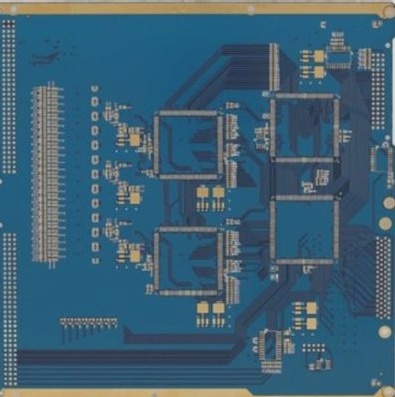1. Whether the quality of PCB ink is excellent, it fundamentally relies on the combination of the major components mentioned above. The exceptional quality of PCB inks is ultimately a manifestation of scientific, advanced, and environmentally friendly formulations. This is reflected in:
2. Viscosity
3. Viscosity, often referred to as dynamic viscosity, represents the shear stress of fluid flow divided by the velocity gradient in the direction of the flow layer. The international unit for viscosity is Pa·s (Pascal-seconds) or mPa·s (milliPascal-seconds). In PCB production, viscosity indicates the fluidity of PCB ink when driven by external forces.
4. Conversion relationship of viscosity units:
5. 1 Pa·s = 10 P = 1000 mPa·s = 1000 cP = 10 dPa·s

1. **Plasticity**
Plasticity refers to the ability of PCB ink to retain its properties after being deformed by external forces. High plasticity in PCB ink improves printing accuracy by ensuring the ink maintains its characteristics even after deformation.
2. **Thixotropic**
PCB ink exhibits gelatinous behavior when at rest, but its viscosity changes upon agitation. This property is also known as tremor and sag resistance.
3. **Fluidity**
Fluidity (or leveling) describes how PCB ink spreads under the influence of external forces. It is the reciprocal of viscosity and is related to the plasticity and thixotropy of PCB inks. Greater plasticity and thixotropy result in higher fluidity, which facilitates easier expansion of the imprint. Low fluidity can lead to issues like netting, where the ink forms a network pattern.
4. **Viscoelasticity**
Viscoelasticity refers to the rapid rebound of PCB ink after it has been sheared and broken by a squeegee. For optimal printing, the PCB ink should quickly return to its original state, demonstrating fast deformation and rebound properties.
5. **Dryness**
PCB ink should dry as slowly as possible on the screen to allow for accurate printing. However, once transferred to the substrate, the ink should dry quickly.
6. **Fineness**
Fineness refers to the size of the pigment and solid particles in PCB ink, which is generally less than 10μm. The fineness should be less than one-third of the mesh opening to ensure a smooth and even application.
7. **Wire Drawing**
Wire drawing describes the extent to which PCB ink stretches into silk-like threads without breaking when picked up with an ink shovel. Excessive stringiness can cause unwanted filaments on the substrate and printing plate, potentially leading to contamination and printing issues.
8. **Transparency and Hiding Power**
The transparency and hiding power of PCB ink vary depending on its application. Generally, circuit PCB inks, conductive PCB inks, and character PCB inks require high hiding power, whereas solder resist inks tend to be more flexible.
9. **Chemical Resistance**
PCB inks must adhere to strict standards for resistance to acids, alkalis, salts, and solvents, depending on their intended use.
10. **Physical Resistance**
PCB inks should be resistant to external scratches, thermal shock, and mechanical peeling, while meeting various stringent electrical performance requirements.
11. **Safety and Environmental Protection**
PCB inks must be low in toxicity, odorless, and environmentally friendly to ensure safety and compliance with environmental regulations.
2. Viscosity
3. Viscosity, often referred to as dynamic viscosity, represents the shear stress of fluid flow divided by the velocity gradient in the direction of the flow layer. The international unit for viscosity is Pa·s (Pascal-seconds) or mPa·s (milliPascal-seconds). In PCB production, viscosity indicates the fluidity of PCB ink when driven by external forces.
4. Conversion relationship of viscosity units:
5. 1 Pa·s = 10 P = 1000 mPa·s = 1000 cP = 10 dPa·s

1. **Plasticity**
Plasticity refers to the ability of PCB ink to retain its properties after being deformed by external forces. High plasticity in PCB ink improves printing accuracy by ensuring the ink maintains its characteristics even after deformation.
2. **Thixotropic**
PCB ink exhibits gelatinous behavior when at rest, but its viscosity changes upon agitation. This property is also known as tremor and sag resistance.
3. **Fluidity**
Fluidity (or leveling) describes how PCB ink spreads under the influence of external forces. It is the reciprocal of viscosity and is related to the plasticity and thixotropy of PCB inks. Greater plasticity and thixotropy result in higher fluidity, which facilitates easier expansion of the imprint. Low fluidity can lead to issues like netting, where the ink forms a network pattern.
4. **Viscoelasticity**
Viscoelasticity refers to the rapid rebound of PCB ink after it has been sheared and broken by a squeegee. For optimal printing, the PCB ink should quickly return to its original state, demonstrating fast deformation and rebound properties.
5. **Dryness**
PCB ink should dry as slowly as possible on the screen to allow for accurate printing. However, once transferred to the substrate, the ink should dry quickly.
6. **Fineness**
Fineness refers to the size of the pigment and solid particles in PCB ink, which is generally less than 10μm. The fineness should be less than one-third of the mesh opening to ensure a smooth and even application.
7. **Wire Drawing**
Wire drawing describes the extent to which PCB ink stretches into silk-like threads without breaking when picked up with an ink shovel. Excessive stringiness can cause unwanted filaments on the substrate and printing plate, potentially leading to contamination and printing issues.
8. **Transparency and Hiding Power**
The transparency and hiding power of PCB ink vary depending on its application. Generally, circuit PCB inks, conductive PCB inks, and character PCB inks require high hiding power, whereas solder resist inks tend to be more flexible.
9. **Chemical Resistance**
PCB inks must adhere to strict standards for resistance to acids, alkalis, salts, and solvents, depending on their intended use.
10. **Physical Resistance**
PCB inks should be resistant to external scratches, thermal shock, and mechanical peeling, while meeting various stringent electrical performance requirements.
11. **Safety and Environmental Protection**
PCB inks must be low in toxicity, odorless, and environmentally friendly to ensure safety and compliance with environmental regulations.



